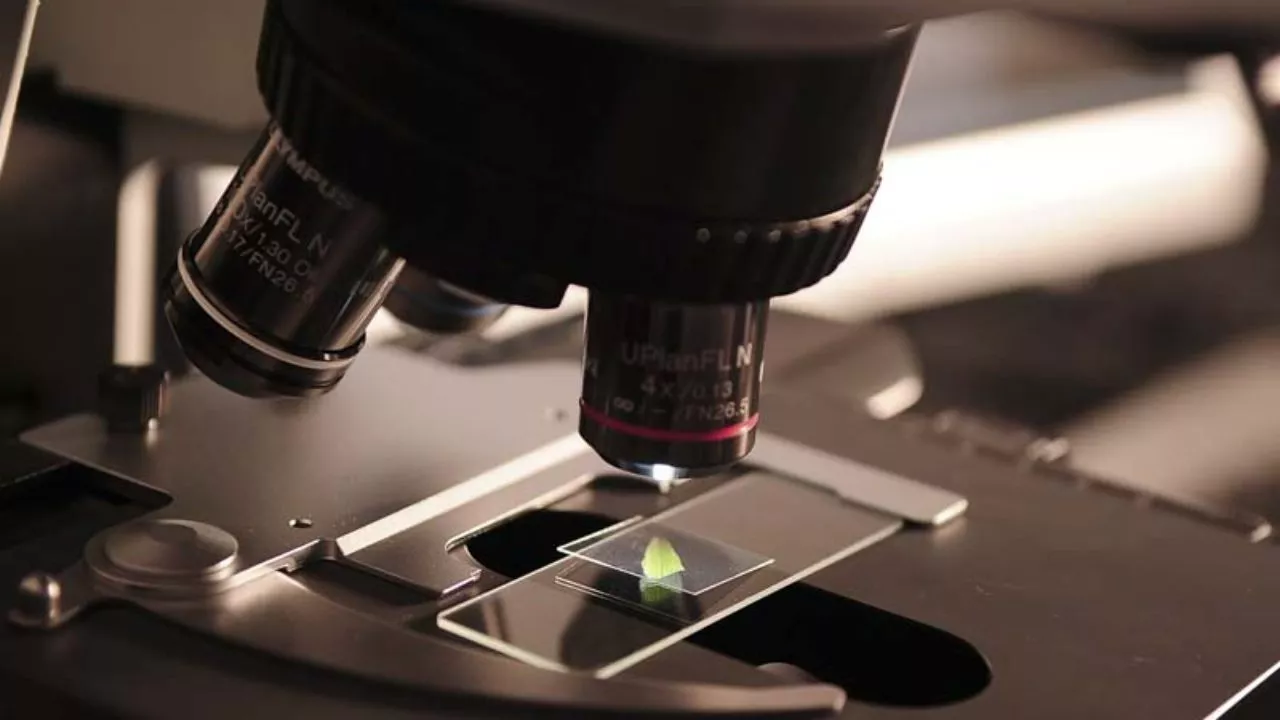The characteristics of the microscope: The most outstanding is the power of resolution, the increase and definition of the object of study.
Characteristics of the Microscope
Microscope is an instrument that has evolved over time thanks to the use of new technologies to offer incredible images more comprehensively and clearly about the various elements that are being studied in areas such as biology, chemistry, physics, medicine, among many other disciplines.
High resolution images that can be obtained with advanced technology microscopes can be really impressive. Nowadays it is possible to observe particle atoms with a level of detail that was unimaginable a year ago.
There are three main types of microscopes. The best known is an optical or light microscope, a device consisting of one or two lenses (composite microscope).
There is also an acoustic microscope that works by creating an image from high-frequency sound waves and electron microscopes, which in turn are classified in scanning microscopes ( SEM, scanning electron microscope ) and tunnel effects ( STM, scanning tunneling microscope ).
The latter provide an image of the ability to “cross” through a hard surface using a so-called “tunnel effect” that is more common in quantum physics.
Although each type of microscope has a different conformation and function, they have a number of properties that, although in some cases measured in different ways, are still common to all. These in turn are factors that determine the quality of the images.
Common characteristics of microscopes
1. resolution power
This is due to the minimum detail that a microscope can offer. It depends on the design and radiation properties of the equipment. Usually, this term is confused with the “resolution” that refers to the information actually achieved by the microscope.
To better understand the difference between resolution power and resolution, it should be noted that the first is the property of the instrument, defined more broadly as ” minimum separation of observable object points that can be perceived under optimal conditions ” (Slayter and Slayter, 1992).
On the other hand, the resolution is the minimum difference between the points of the object being studied, which were actually observed under real conditions, which could be different from the ideal conditions under which the microscope was developed.
For this reason, the resolution observed in some cases is not equal to the maximum possible under the desired conditions.
For good resolution, in addition to resolution, you need good contrast properties, both microscope and object or sample adherence.
2. Contrast or Definition
This property refers to the ability of the microscope to determine the edges or boundaries of the object relative to the background on which it is located.
This is the result of the interaction between the radiation (light, heat or other energy) and the object being studied, characterized by contrast (sample) and instrumental contrast(one with the same microscope).
Therefore, using the gradation of instrumental contrasts, it is possible to improve the quality of the image in order to obtain an optimal combination of variables that affect good results.
For example, in case of optical miscrosopio, absorption (property that determines the clarity, darkness, transparency, opacity and color of the object) is the main source of contrast.
. Increase
This is also called the degree of expansion, this function is only a numerical relationship between the size of the image and the size of the object.
Usually denoted by a number with the letter “X” added, so a microscope with a magnification of 10000X offers an image of 10,000 times the actual size or object being viewed.
Contrary to what might be thought, the magnification is not the most important microscope property, because the computer may have a rather high magnification, but a very poor resolution.
From this fact, the concept of a useful magnification , that is, the level of growth, which, together with the contrast of the microscope, genuinely promotes a high quality and sharpness image.
On the other hand, an empty or incorrect magnification occurs when the maximum useful increase is exceeded. From now on, despite the fact that you will continue to enlarge the image, no more useful information will be obtained, but on the contrary, the result will be higher but blurred as the resolution remains unchanged.
The following points illustrates these two concepts:
The expansion in electron microscopes is much higher than in optical microscopes that have reached 1500X growth for the most advanced, reaching first to 30000X at SEM microscopes.
For scanning tunneling microscopes (STMs), the range of magnification can reach an atomic level of 100 million times the particle size, and it is even possible to move and place them in certain masses.
Conclusion
It is important to note that, according to the properties of each type of microscope mentioned above, each has a specific application that allows for optimal use of the advantages and benefits of image quality.
If some types have restrictions in certain areas, they may be covered by another technology.
For example, scanning electron microscopes (SEMs) are commonly used to create high resolution images, especially in the field of chemical analysis, levels that cannot be achieved with a lens microscope.
An acoustic microscope is more often used to study the characteristics of non-transparent solid materials and cells. Easily detect empty space in the material, as well as internal defects, fractures, cracks and other hidden elements.
In contrast, the conventional optical microscope is still useful in some scientific fields because it is easy to use, its relatively low cost and its features still produce favorable results for the relevant research.

